Checklist for Selecting Cabinet Door Hinges
- Reusing Old Hinges: Reusing old hinges can be a cost-effective option if they're still in good condition and compatible with your new cabinet doors. To determine if they're suitable, check for signs of wear, rust, or damage, and ensure they operate smoothly. Understanding the type of hinges you have is crucial here. The most common type is Compact Concealed hinges also called European hinges, which are hidden from view when the cabinet doors are closed, offering a clean and streamlined look. However, more traditional cabinets may use Overlay hinges, which are visible when the doors are closed. If your existing hinges align with your needs and are in good shape, reusing them can save you time and money.
- Purchasing New Hinges: If you're looking to upgrade your cabinets or your old hinges are no longer suitable, investing in new ones is the way to go. When opting for new cabinet doors, knowing the type of hinge you use becomes essential. This information ensures compatibility and proper installation of the doors. CabinetNow offers the convenience of boring holes for European/Concealed style hinges for an additional $10, saving you the hassle of drilling them yourself and ensuring precise alignment.
- Cup Only: This configuration is used for hinges that attach to the door solely through the cup, typically with wood screws. Cup-only hinges are commonly used for "screw-on" style hinges, where the hinge is directly screwed onto the door without additional hardware.
- Cup and Dowel: In this configuration, the hinge features a cup for attachment to the door and a dowel that fits into a corresponding hole in the cabinet frame. The dowel provides additional stability and support, ensuring a secure and durable connection between the door and the cabinet frame. Cup and dowel hinges are often used for "press-in" style hinges, where special screws and plastic dowels are used to attach the hinge to the door.
- 3mm Bore Distance: This option positions the hinge hole closer to the edge of the door, providing a smaller gap between the door and the cabinet frame when closed. It's suitable for hinges with specific requirements for closer proximity to the edge.
- 5mm Bore Distance: Conversely, the 5mm bore distance option places the hinge hole slightly further from the edge of the door, creating a larger gap between the door and the cabinet frame when closed. This option may be preferred for hinges that require more clearance or for aesthetic purposes.
- Height Below 50": Doors of this height should have two bores to ensure stability and proper functionality.
- Height at 50" and Above: Doors exceeding 50" in height should have three bores to provide additional stability and support, especially for taller doors.
- Pattern A - Cup and Dowel - 5mm from the edge
When it comes to cabinet doors, hinges play a pivotal role in both functionality and aesthetics. Choosing the right hinges ensures smooth operation, proper alignment, and longevity for your cabinets. At CabinetNow, we understand the importance of precision and customization in cabinetry projects. While we don't sell hinges directly, our preboring services ensure that your cabinet doors arrive ready for installation with your chosen hinges. In this comprehensive guide, we'll delve deeper into each aspect of selecting cabinet door hinges to help you make informed decisions.
1. Evaluate Your Existing Hinges
Before proceeding with your cabinet door project, take the time to evaluate whether you'll reuse your old hinges or opt for new ones. Here's what to consider:
By carefully evaluating your existing hinges and considering your needs and preferences, you can make an informed decision about whether to reuse them or invest in new ones for your cabinet doors. With the option to bore holes for European/Concealed hinges, CabinetNow simplifies the process, ensuring a seamless and hassle-free installation experience.
2. Consider Cup Style and Bore Distance
When selecting hinges for your cabinet doors, it's essential to understand two key factors: cup style and bore distance. These considerations play a significant role in ensuring proper installation and functionality.
Cup Style:
Cup style refers to how the hinge attaches to the cabinet door and can impact the overall appearance and performance of the hinge. There are two main cup styles to consider:
Understanding the cup style of your hinges is crucial for selecting the appropriate hardware and ensuring proper attachment and functionality of your cabinet doors.
Bore Distance
Bore distance refers to the distance from the edge of the door to the edge of the hinge hole and is essential for proper alignment and installation of the hinges. When selecting hinges, you'll typically have the option to choose between 3mm and 5mm bore distance options, depending on your hinge model and specifications.
Choosing the appropriate bore distance ensures that the hinges align correctly with the cabinet frame and allows the door to open and close smoothly without interference.
Specific Requirements Based on Cabinet Door Height
Keep in mind specific requirements based on your cabinet door height:
By considering cup style and bore distance when selecting hinges for your cabinet doors, you can ensure proper attachment, alignment, and functionality, contributing to a seamless and aesthetically pleasing cabinetry installation.
3. Explore Preboring Options
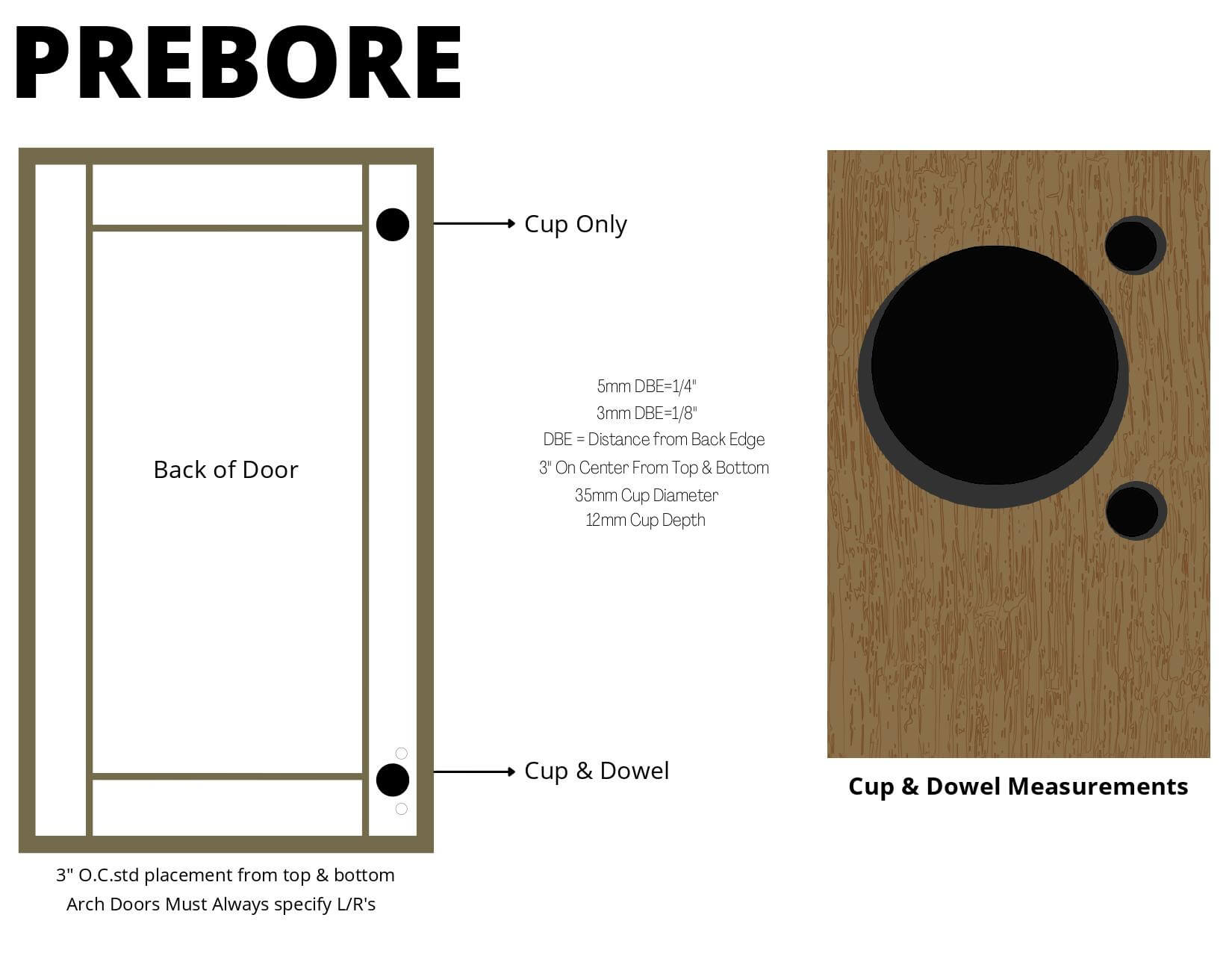
At CabinetNow, we offer bore options to ensure that your cabinet doors arrive with precisely routed holes for the installation of European/Concealed hinges. This means that you won't have to worry about drilling the hinge holes yourself or risking misalignment during installation. These hinges provide a sleek and modern look, as they're hidden from view when the cabinet doors are closed.
Bore Option Patterns:
*Please note these are different than our cabinet doors for IKEA bore options and Thermofoil Cabinet Door bore options.
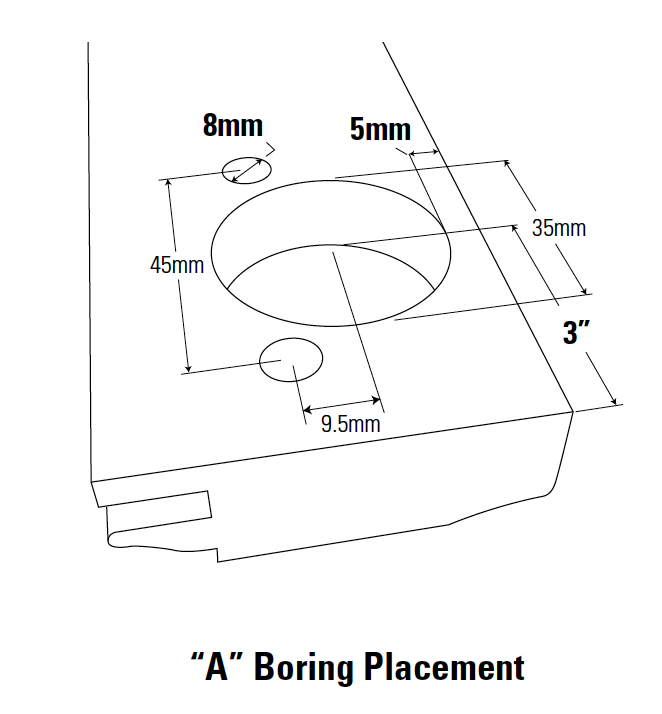
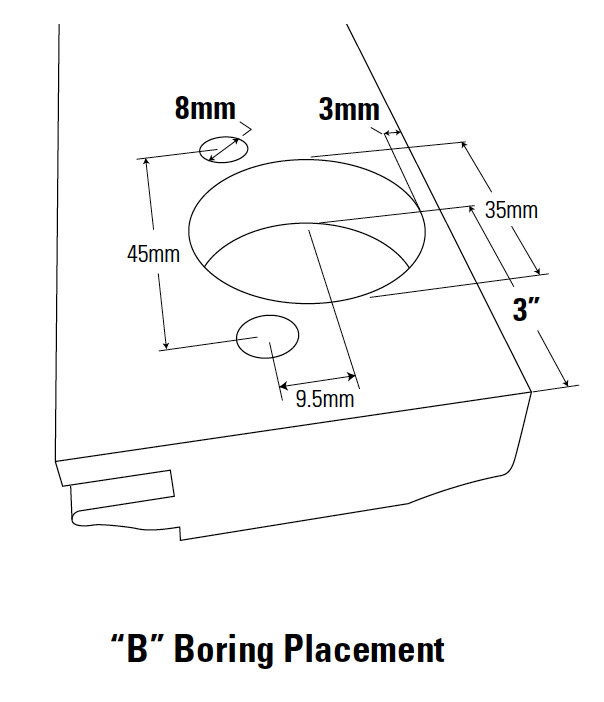
- Pattern B - Cup and Dowel - 3mm from the edge
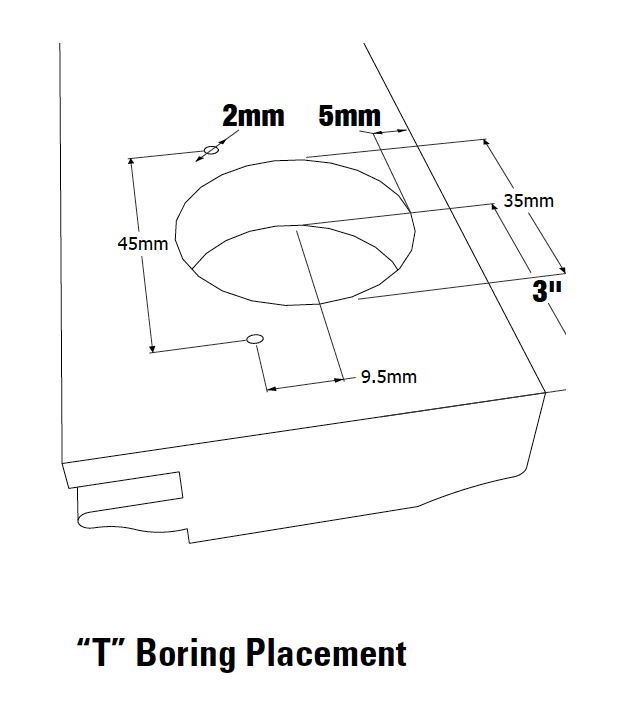
- Pattern T - Cup Only - 5mm from the edge
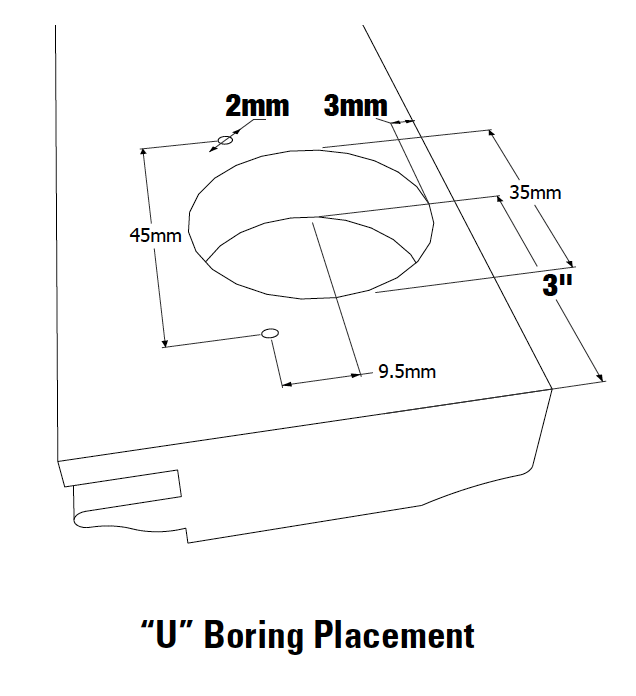
- Pattern U - Cup Only - 3mm from the edge
- Tools and Skills: Ensure you have the appropriate tools, such as a drill and drill bits, as well as the skills to accurately measure and drill the hinge holes. Precision is key to achieving a proper fit and alignment for your hinges.
- Compatibility Check: Verify the specifications of your current hinges, including the hinge type, size, and mounting hole pattern. Use these measurements as a guide when drilling your own hinge holes to ensure compatibility with your cabinet doors.
- Reputable Retailers: We recommend sourcing European/Concealed hinges from reputable retailers like Woodworker Express or Amazon. These retailers offer a wide selection of hinges from trusted manufacturers, ensuring quality and reliability.
- Matching Specifications: When choosing new hinges, it's essential to match them with your cabinet door specifications, including the hinge type, size, and overlay requirements. Refer to the specifications of your cabinet doors and consult with the retailer to ensure you select hinges that provide a proper fit and functionality.
- Considerations for Installation: Keep in mind that the type of hinge you choose can affect the way the door sits and operates within the cabinet frame. Proper measurements and alignment are crucial for ensuring seamless integration and optimal performance. Contact us for any questions or guidance!
- Full Overlay:
- European/Concealed Hinges: These hinges are ideal for full overlay cabinets as they are designed to be hidden from view when the doors are closed, creating a seamless and streamlined look. They offer a clean aesthetic while allowing the doors to open fully without interference from neighboring cabinets.
- Partial Overlay:
- Variable Overlay Hinges: These hinges are adjustable and can accommodate various overlay sizes, making them suitable for partial overlay cabinets. They allow the doors to partially cover the cabinet frame while providing smooth operation and proper alignment.
- Inset:
- Butt Hinges: Butt hinges are commonly used for inset cabinets as they allow the doors to sit flush with the cabinet frame when closed. They are surface-mounted and provide a classic and traditional look, complementing the inset door style.
4. Verify Compatibility
While our prebore option is tailored for European/Concealed hinges, there may be instances where it doesn't align with your current hinges. In such cases, you have two alternatives to ensure proper installation:
a.) Drill Your Own Bore Holes: If our prebore option doesn't match your current hinge specifications, you have the option to drill your own hinge holes on your cabinet doors. This alternative requires having the necessary tools and skills for precise drilling. Here's what you need to consider:
b.) Purchase New Hinges: If drilling your own hinge holes isn't feasible or desirable, you have the option to purchase new hinges that align with your cabinet door specifications. Here's what to consider:
By verifying compatibility and exploring alternatives such as drilling your own hinge holes or purchasing new hinges, you can ensure a successful installation process for your cabinet doors. Whether you opt for DIY drilling or sourcing new hinges, attention to detail and precision are essential for achieving the desired fit and functionality in your cabinetry.
5. Overlay Impact on Hinge Selection
The overlay of the cabinet doors, whether full overlay, partial overlay, or inset, will influence hinge selection. Ensure that the chosen hinges are compatible with the specific overlay requirements of your cabinet doors to achieve proper alignment and functionality.
- Solid Wood Doors:
- Heavy-duty European hinges with a thicker gauge and sturdy construction.
- Concealed hinges with a higher weight capacity, specifically designed for solid wood doors.
- Ball-bearing hinges, known for their smooth operation and durability, suitable for heavy doors.
- MDF Doors:
- Soft-close European hinges, providing gentle closing action and suitable for MDF doors of various thicknesses.
- Self-closing European hinges, offering convenience and ease of use for MDF cabinet doors.
- Laminate Doors:
- Clip-on hinges, offering easy installation and adjustment for laminate doors.
- Overlay hinges, available in various styles and finishes to complement laminate cabinet doors.
6. Cabinet Door Style Preference
Choosing hinges plays a role in how the overall appearance of your cabinet design. It's essential to assess your specific requirements and style preferences.
Determine the overall aesthetic you want to achieve with your cabinetry. Whether you prefer a traditional, modern, or transitional look will influence the type of hinges you choose.
Hidden Hinges
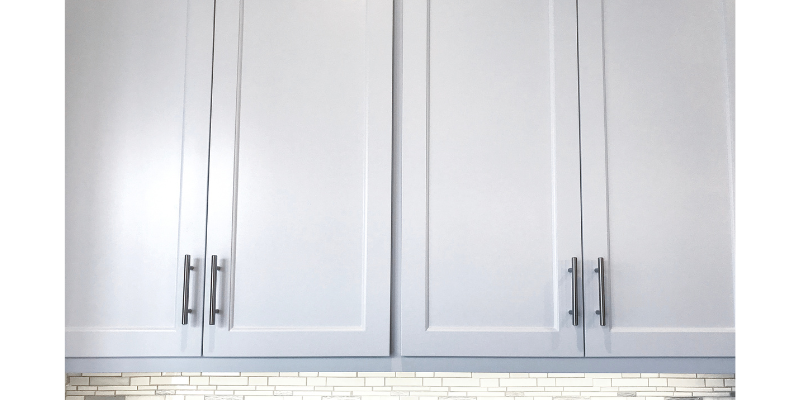
If you prefer a sleek and minimalist appearance, hidden hinges are the way to go. European concealed compact hinges provide a clean and streamlined look as they remain hidden from view. Pair these hinges with simple cabinet doors such as Shaker style or slab cabinet doors for a cohesive and understated aesthetic. For instance, when selecting hinges for Shaker or Slab cabinet doors, consider options like European/Concealed hinges, which seamlessly integrate without detracting from the door's design.
Visible Hinges
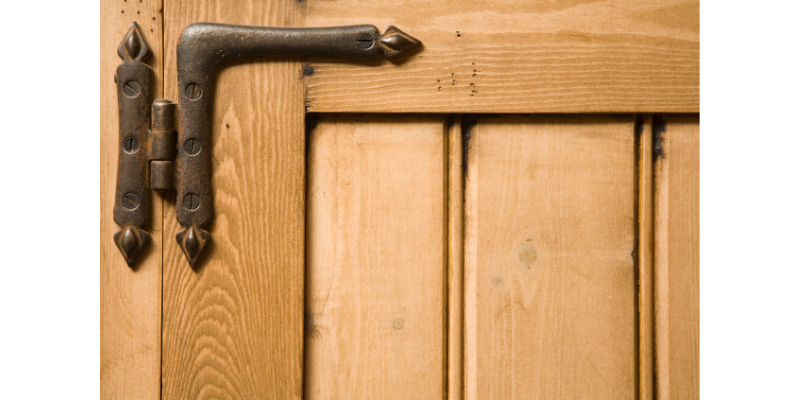
While European/Concealed hinges are a popular choice for both Shaker and slab-style doors, there are other hinge options to consider based on specific design preferences. Traditional-style cabinets with raised panel doors or intricate detailing may benefit from visible hinges that complement the cabinetry's ornate design. Surface-mount hinges or decorative hinges with exposed knuckles can add character and charm to traditional kitchen spaces.
7. Door Material and Weight
Take into account the material and weight of your cabinet doors. Solid wood doors may require hinges with greater load-bearing capacity compared to lightweight materials like MDF or laminate.
8. Door Opening Angle
- Wide Opening Angle Hinges:
- Full-overlay European hinges with a wide opening angle of 170 degrees, allowing for maximum accessibility to cabinet contents.
- Corner cabinet hinges with a wide opening angle, ideal for reaching items stored in deep corner cabinets.
- Standard Opening Angle Hinges:
- Soft-close European hinges with a standard opening angle of 110 degrees, providing smooth and controlled door movement.
- Self-closing European hinges with a moderate opening angle, suitable for most cabinet configurations.
- Narrow Opening Angle Hinges:
- Inset hinges with a narrow opening angle, ideal for cabinets in confined spaces or where clearance is limited.
- Partial-overlay hinges with a narrower opening angle, offering a more compact door swing for tight spaces.
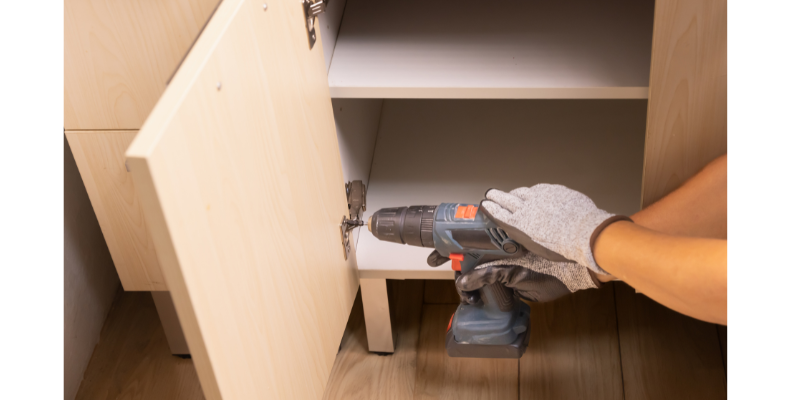
Think about the desired door opening angle. Some hinges allow for a wider opening angle, which can be beneficial in tight spaces or for maximizing accessibility to cabinet contents.
9. Finish Matching
- Soft-Close Hinges:
- Offer a controlled and gentle closing experience.
- Prevent cabinet doors from slamming shut.
- Ideal for maintaining a quieter atmosphere in busy kitchen environments.
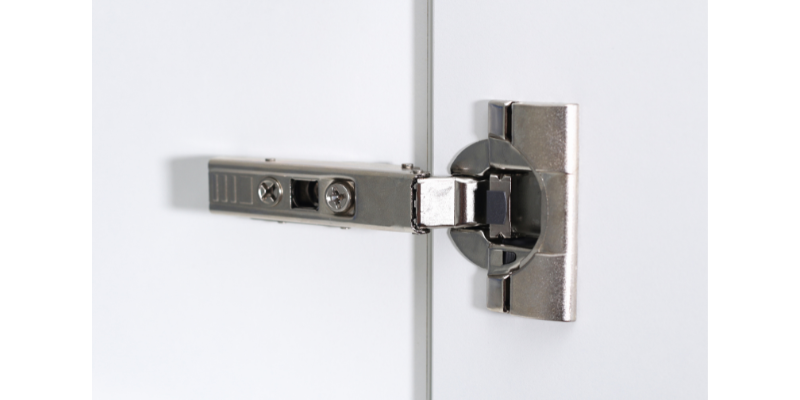
- Self-Closing European Hinges:
- Automatically pull cabinet doors closed when pushed to a certain point.
- Convenient for ensuring secure closure in high-traffic areas.
- Eliminate the need for manual intervention.
- Concealed Hinges:
- Provide a sleek and modern appearance by hiding from view when doors are closed.
- Offer a clean aesthetic and precise alignment adjustment.
- Push-to-Open Hinges:
- Enable cabinet doors to be opened with a gentle push.
- Eliminate the need for handles or knobs, ideal for minimalist designs.
- Example: Sugatsune magnetic touch latch hinges.
- Hinge Attachment: Predrilled holes fit hinges, no extra drilling needed.
- Ready to Mount: Doors attach directly to cabinets after hinge installation.
- DIY Accessibility: Installation is straightforward for all skill levels.
- Pro Convenience: Professionals save time with simplified installation.
- Consistent Finish: Uniform hinge placement enhances cabinetry aesthetics.
- Customization: Doors allow for hinge selection to match preferences.
High-End Hinges:
- Concealed or European-style hinges: These hinges, ranging from $5 to $20 per hinge, offer a sleek design and hidden installation, providing a modern look to cabinets.
- Soft-close European hinges: Priced between $8 to $30 per hinge, high-end soft-close European hinges ensure a smooth and silent closing mechanism, adding luxury to your cabinetry.
- Adjustable hinges with advanced features: These hinges, priced from $10 to $40 per hinge, offer additional features such as adjustable tension for precise door alignment or integrated dampening for controlled closing motion.
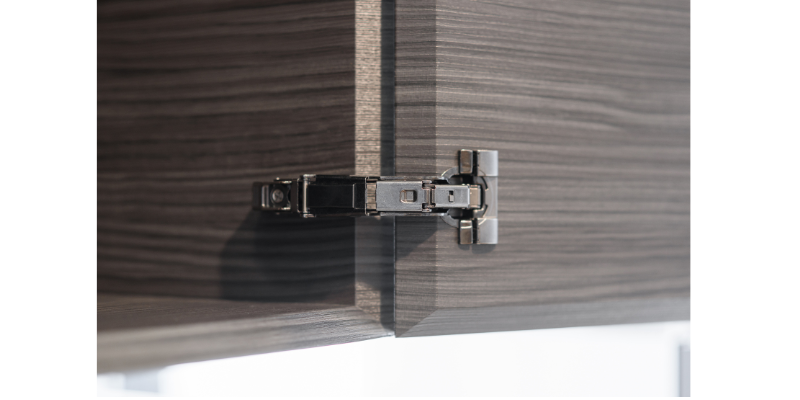
Cheaper Hinges:
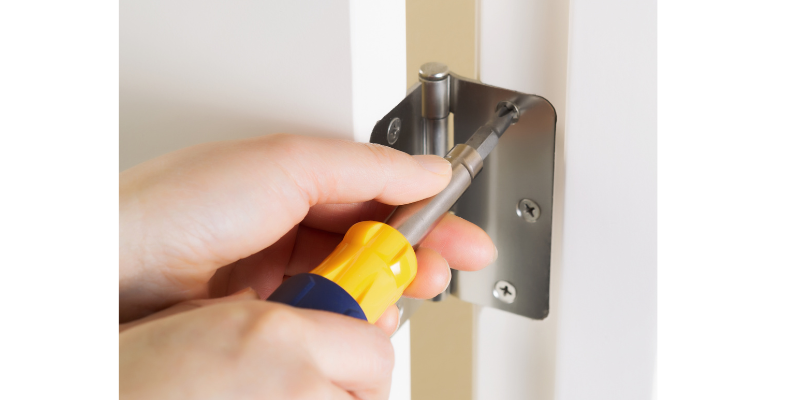
- Basic overlay hinges: Available at $1 to $5 per hinge, these economical hinges are suitable for standard cabinet doors, though they lack advanced features.
- Non-soft-close European hinges: Priced from $1 to $8 per hinge, these hinges lack the soft-close feature, resulting in traditional door-closing motion.
- Fixed-position hinges: With prices ranging from $1 to $6 per hinge, these hinges offer limited flexibility for door adjustment, providing a budget-friendly option.
- Long-Term Maintenance:
- High-quality hinges made from durable materials require minimal maintenance over time. Opting for hinges with sturdy construction and premium finishes reduces the need for frequent repairs or replacements.
- Hinges with low-quality materials or finishes may wear down quickly, leading to issues such as squeaking, misalignment, or corrosion. This can result in increased maintenance efforts and potential replacement costs down the line.
- Durability:
- Hinges constructed from robust materials such as stainless steel, brass, or zinc alloy offer superior durability and resistance to wear and corrosion. These materials ensure that hinges can withstand frequent use and environmental factors without deteriorating.
- Additionally, hinges with durable finishes such as chrome, nickel, or powder coating provide an extra layer of protection against scratches, tarnishing, and rust, further enhancing their longevity.
- Stainless steel concealed hinges: Known for their corrosion resistance and strength, stainless steel hinges are ideal for areas prone to moisture, such as kitchens and bathrooms.
- Solid brass hinges with a polished finish: Brass hinges offer a timeless aesthetic and exceptional durability, making them suitable for both traditional and contemporary cabinetry.
- Zinc alloy soft-close European hinges with a powder-coated finish: These hinges combine durability with smooth operation and a sleek appearance, providing long-lasting performance and minimal maintenance requirements.
Consider matching the finish of the hinges to other hardware elements in the kitchen, such as cabinet handles and knobs. Coordinating finishes create a cohesive and unified look that enhances the overall aesthetic of the space.
10. Cabinet Functionality
Think about how you use your cabinets and what features are important to you. For example, Soft-Close European hinges can prevent slamming and provide a quieter closing experience.
By considering these hinge features, you can enhance the usability and aesthetics of your cabinetry to better suit your needs and preferences.
11. Installation Ease
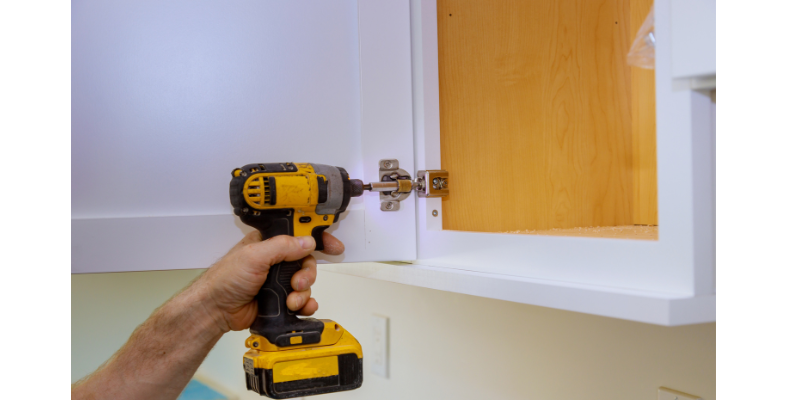
With prebored cabinet doors, the installation process becomes remarkably straightforward and hassle-free. By opting for prebored doors, you're essentially streamlining the installation process, saving both time and effort. Here's how prebored cabinet doors simplify installation:
12. Budget
When selecting hinges for your prebored cabinet doors, setting a budget can help narrow down options based on your financial constraints. Let's explore this with examples of high-end hinges compared to more affordable ones:
Example: A set of premium concealed hinges with soft-close features and adjustable tension may cost significantly more than standard hinges but provide superior functionality and aesthetic appeal.
Example: A set of basic overlay hinges without soft-close functionality will be more budget-friendly but may lack the premium features and refined operation of higher-end options.
By setting a budget, you can prioritize features and quality levels that align with your preferences and financial constraints. While high-end hinges offer superior performance and aesthetics, cheaper options can still provide functional solutions within a limited budget. Ultimately, the choice depends on your priorities and the overall design and budget of your cabinetry project.
13. Future Maintenance and Durability
When considering hinge options for your cabinet doors, it's crucial to think about long-term maintenance and durability. High-quality materials and finishes are essential for ensuring longevity and ease of maintenance. Here's a more detailed explanation along with examples of hinges:
Examples of high-quality hinges with excellent long-term maintenance and durability include:
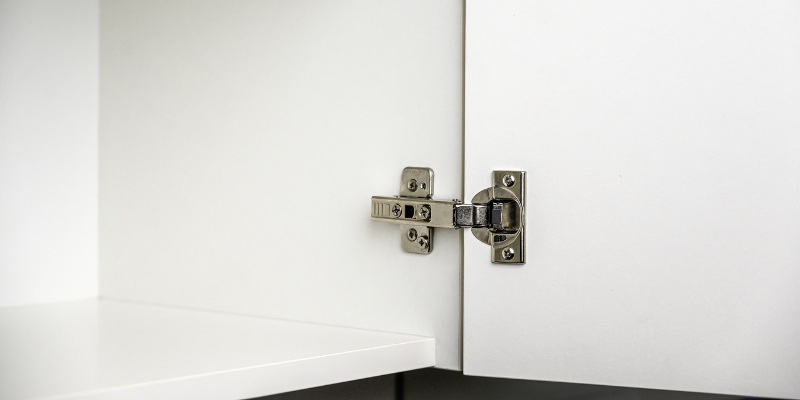
By prioritizing hinges made from high-quality materials and finishes, you can ensure that your cabinet doors remain functional and visually appealing for years to come. Additionally, investing in durable hinges upfront can help you avoid the hassle and cost of frequent maintenance or premature replacement.
Conclusion
Selecting the right hinges for your cabinet doors is a critical step in any cabinetry project. At CabinetNow, our preboring services streamline the installation process, ensuring precise alignment and compatibility with your chosen hinges. By considering factors such as style, functionality, and specific requirements, you can confidently choose hinges that not only meet your needs but also elevate the overall look and functionality of your cabinets. With our comprehensive guide, you'll be well-equipped to make informed decisions and achieve the perfect cabinetry solution for your space. Please contact us for any assistance!
 MADE IN THE USA
MADE IN THE USA



